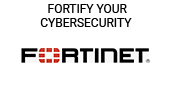
Firas Jadalla, Regional Director – Middle East, Turkey & Africa, Genetec Inc, discusses how work management platforms are transforming collaboration in security operations by streamlining workflows and enhancing efficiency as organisations grow in complexity.
Effective collaboration between security operators, teams, and other departments is essential for the smooth functioning of any organisation. However, as organisations grow in complexity, it becomes increasingly challenging for teams to coordinate. Factors such as staffing shortages, high turnover rates, and outdated collaboration tools exacerbate these challenges.
When staff rely on multiple disconnected tools for dispatch, reporting, and task tracking, operations often become fragmented, leading to delays and gaps in communication. In critical areas like safety and security, these inefficiencies can have serious consequences.
Work management solutions bridge these gaps by managing, tracking, and documenting activities, streamlining processes, and fostering real-time collaboration. Built specifically for security teams, these solutions enhance communication, boosts productivity, and improves overall operational efficiency through workflow automation.
Organisations in the Middle East operate in high-security environments where seamless collaboration is essential. A robust work management platform enables swift response and coordination across complex operational landscapes. This growing need for integration is driving more organisations to align their security and IT departments. According to a recent Genetec report, 78% of end users in the META region indicate that these departments now work collaboratively, reflecting a shift toward a more unified security approach.
Overcoming barriers to effective collaboration
Over time, many organizations accumulate a patchwork of databases, spreadsheets, and standalone systems to communicate, create reports, and track activities. Some still rely on outdated paper-and-pen processes, which aren’t only time-consuming but also prone to errors. These disjointed methods hinder information sharing and coordination.
A digital work management platform consolidates these fragmented systems, offering teams a unified view of activities accessible on both desktop and mobile devices. To take full advantage of their security system data, security teams need to consider more than a generic work management solution.
An ideal work management solution for security teams should accommodate security activities such as guard tours, patrols, and maintenance inspections. It should also seamlessly integrate with existing security systems. For instance, a video operator should be able to create a work request with an attached camera snapshot and route it to the appropriate team in just a few clicks.
To ensure trustworthy audits and reporting, the work management system should be built with strong cybersecurity measures and ensure that data can’t be manipulated after the fact by applying blockchain principles.
Benefits of work management systems
Implementing a work management system can transform security operations in several ways:
- Improved Communication: Teams gain real-time visibility into task progress, responsibilities, and pending assignments. Updates and alerts can be shared seamlessly to request assistance or provide situational awareness.
- Enhanced Collaboration: Every team member contributes to shared goals rather than isolated tasks. Custom API integrations can connect with other systems, such as employee apps, further fostering teamwork.
- Time Savings: Built-in reporting tools automate activity logs and compliance audits, freeing up time for other critical tasks.
- Operational Efficiency: Routine tasks, incident management, and resource tracking are streamlined. Tasks are assigned to personnel with the appropriate skills, tools, and knowledge, ensuring readiness and precision.
- Workflow Automation: Automations simplify recurring tasks, such as setting reminders, generating reports, or notifying team leads when new requests are added.
- Resource Optimisation: Features like work ticketing and asset management enable efficient resource allocation and management of internal and external requests.
- Mobile Support: Field officers benefit from mobile apps that enhance situational awareness, communication, and access to standard operating procedures on the go.
Today, governments across the region, including the UAE and Saudi Arabia, are heavily investing in smart security solutions as part of their national digital transformation strategies. A centralised work management platform not only supports these efforts but also helps businesses align with evolving security regulations, ensuring compliance and streamlining reporting processes.
Tips for successful implementation
Every organisation has unique workflows, so selecting a customisable work management system is crucial. It’s important to choose a solution that’s customisable and intuitive to minimise the need for extensive training.
Integration is another key factor. A platform that deeply integrates with your existing security ecosystem provides a cohesive view of operations and eliminates the need for manual data transfers or redundant processes.
A well-designed work management system can break down silos, empower teams, and boost efficiency. To ensure a successful deployment, adopt a lean and agile approach: start small and gradually incorporate more features as your team becomes comfortable with the platform.
With initiatives like Saudi Vision 2030 and UAE’s Smart City strategy, organisations are increasingly integrating AI-driven security and IoT-enabled monitoring into their operations. A work management platform with automation capabilities supports these advanced security frameworks.
Image Credit: Genetec





